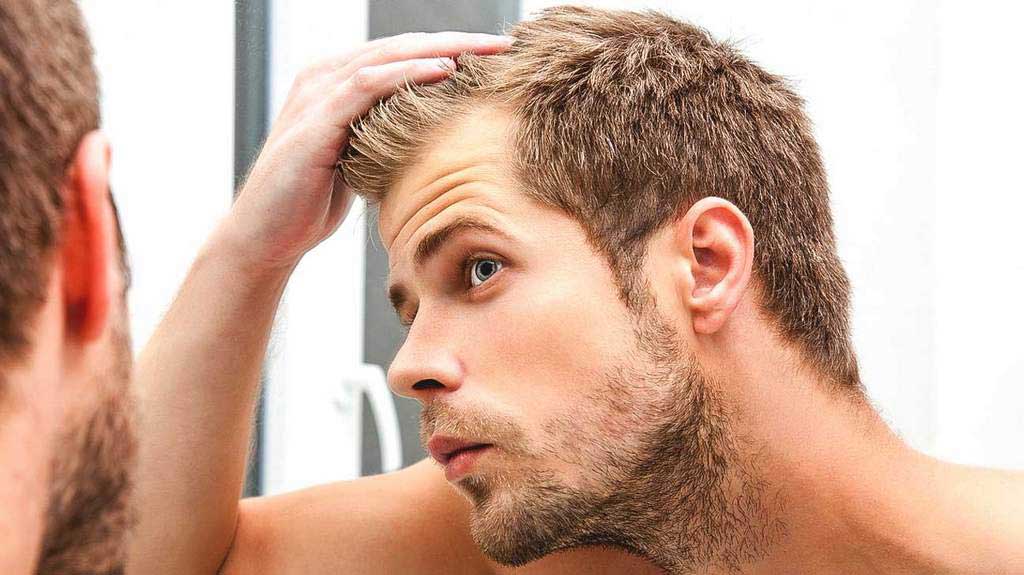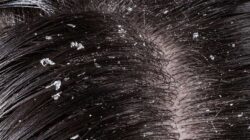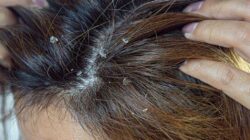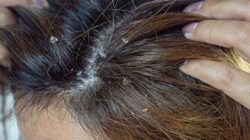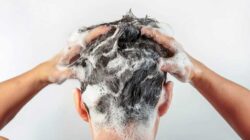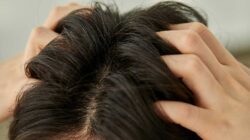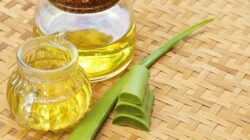No matter where you are and no matter what type of your hair is, one condition that is hard to avoid is flakes or dandruff. It is a pretty common hair situation that can happen in every age and person, which shows how the scalp condition is not something you should worry about. It is more common, but still can be annoying. So, what should you do? Here are things to know beforehand.
What Is It? All You Need to Know About Dandruff
Also known as pityriasis and people call it flakes, the situation is pretty much a common scalp condition that can happen to everyone, everywhere or every time. Professionals see it as one of the common situations that are mostly about annoying conditions, shaming situations, or embarrassing cases. It is not something that people should be scared of to the bone.
Based on its appearance and condition, the hair and scalp flakes are caused by the skin of the scalp fragmenting due to an excess of dead cells on the head. It is not serious whatsoever but can create insecurity about people’s personal or physical appearance. The idea is that the hair flakes are pretty much visible.
It is also because the human body shed dead cells every day from the epidermis, including through the scalp. These conditions can be fixed and gone naturally with a routine bath or wash. But when it comes to hair and scalp, people only wash it in less regular numbers. It can lead to conditions of excessive shedding or flaking of white slivers.
There is some information that the main cause of the scalp or hair condition is Malassezia Globosa. It is a fungus that lives on the scalp and later feeds on the sebum. It later produces oleic acid in the hair. It is completely normal. But when the sebum is too much, the acid will penetrate the top layer of the skin creating more shedding of epidermal cells or dandruff.
Things to know
It is safe that the condition might create and develop differently from one person to another. Some people can develop the condition and others don’t. At some point, the cases are different thanks to many other factors and causes. The symptoms might also look diverse, which shows how skin problems can happen to everyone.
A. The Symptoms
As the flakes are pretty much visible, the best symptoms to consider are your hair and scalp appearance. The common symptoms are pretty apparent with white-is small flakes on the scalp, hair, shoulders, eyebrows, beard, or moustache. The condition can appear more severe as you see the flakes getting more and more over time.
Some other conditions and symptoms are the itchy scalp condition. As you scratch your scalp, you can see some whiteish dirt or skin shed on it. At worst, the condition will appear with a scaly, crusty scalp that mostly appears in infants or kids with a cradle cap. This sign can get even more serious or flare up when stressed, during dry or cold seasons.
B. Causes
As said before that the main causes of the flakes are a fungus living on the human’s scalp. It is normal. But some other conditions make the fungus work abnormally, making more excessive shedding of dead cells. It is also known that the yeast-like fungus feeds on oil on the scalps, thus increasing the flakes.
Some other causes can include irritated or oily skin conditions. But on the other hand, dry skin might also increase the likelihood of having the problem. In many cases, scalp conditions are the primary causes of the situation. That is why a good scalp and hair treatment can help control flaking or shedding.
But it is also best to underline that contact dermatitis or hair and scalp sensitivity to care products could also trigger the condition. People consider this cause as using not suitable products. The last thing that might cause the white shedding on hair is skin conditions, such as eczema and psoriasis.
C. Other Causes Factor
Surprisingly, some factors show how people are more susceptible to the condition than others. The biggest myth that somehow turns out to be true is how being male comes with the biggest chance of having dandruff. But it does not mean females cannot accept similar hair and scalp problems.
Age can also be the other determiner of why the condition happens. Many of the excess shedding of dead cells in the scalp happen in young adulthood. It can continue to middle age, which can also indicate that the problem can stay lifelong. Some illnesses also have a big relation to the condition, such as Parkinson’s disease, HIV, or immune problems.
The biggest highlight is poor hygiene. Many see these possibilities as a myth, but that does not mean it is impossible. Hair and scalp health plus its hygiene include the process of using shampoo and conditioner. A wrong product can increase the cause. Using poor quality products is also known as the culprit for the sitting.
How about diet and weather? These two factors have huge roles in hair and scalp care. When the weather is cold or hot, the scalp can get dry. It later increases the chance of oil deviation and increases the sebum. Nutrition also plays a role in the health of the hair and scalp health. You will need to drink more water, avoid caffeine, salty food, and fried food, and get more nutrition.
Dandruff Treatments
After diagnosing the condition, you can start treating the problem. In many cases, the flaking and itching are almost untreatable. It is even stated that the hair issue cannot be cured, but at least you can control it with some hair products. Based on the severity (light, mid, to severe), you can pick your hair product accordingly.
The mild condition is controllable with a gentle shampoo to reduce skin cell build-up and oil. Sometimes, you can move to a specific medicated shampoo. The medicated shampoo is meant to help with the issues, but you still need to use regular shampoo and conditioner. But the frequency of using it will depend on your scalp condition.
Drier hair and scalp can use the treatment less frequently compared to the normal two or three-times-a-week shampooing. There are also many other options both medicated and unmedicated. The thing to consider is to see the reaction. If you found the uses develop a stinging or itching effect, stop using them.
In generic products, some products for the situation tend to contain a classified formulation. Some are stronger than others, which can lead to several effects. The common one is a shampoo with pyrithione zinc as an antibacterial ingredient. Some also have salicylic acid, which reduces scaling. You can also find fluocinolone to help control irritation, flaking, and itching.
Many other ingredients can include selenium sulfide with an antifungal agent, ketoconazole to kill the fungi, or tar-based shampoo that helps slow down the skin cell flake-off. It is best to try them one by one and pick the best working product for your hair problem. It is also good to call a doctor or ask for professional help, so you got the proper medication.
Alternative, Home Remedies, And Lifestyles
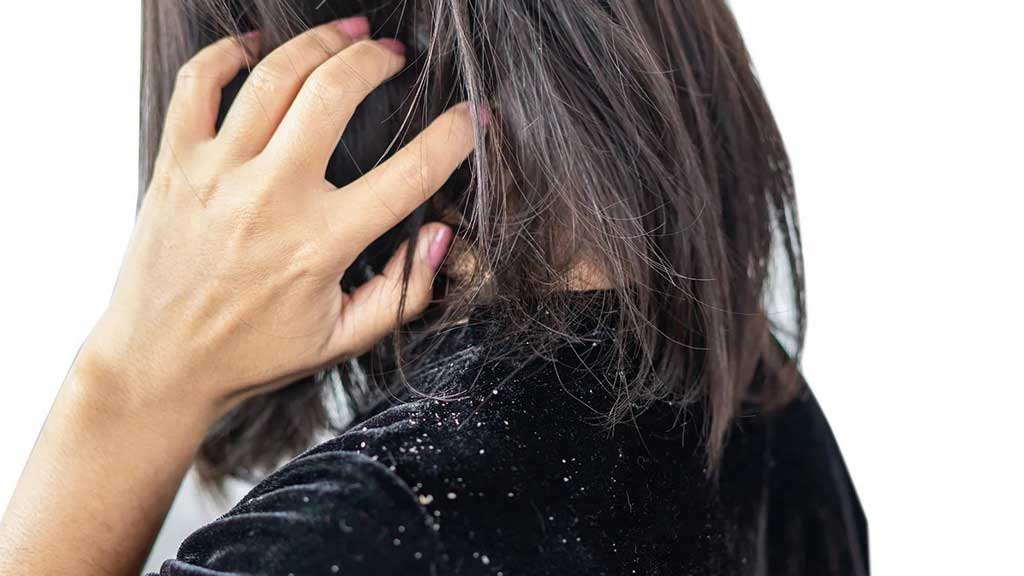
Aside from medication, some simple lifestyles and home remedies might help control dandruff. You should manage stress, eat a healthy diet, protect your hair against the sun, limit the use of hair styling products, and have a routine that suits your needs. Meanwhile, the alternative medication that seems to be working is the Australian tea tree with its antifungal, antibiotic, and antiseptic agents.
Three Wrong Myths About Dandruff in Society
1. Contagious Condition
Many myths make this hair and scalp situation into something more scary or dangerous. But in fact, the condition is not that menace. The myth of how the flakes are contagious is completely bullshit. But the severity of its condition might lead to itchy scallops, and lead to other skin conditions such as dermatitis, psoriasis, and eczema. So, it’s better to check with a specialist.
2. Vigorous Comb in The Opposite Direction to Remove Flakes
The idea is pretty much trying to shake off the shed and make the powdery substance get out of the hair. While it is work, it does not help the condition at all. The said myth will only lead to pain, infection, or skin irritation. The condition can get worse since the flakes will get ticker because the oil tries to protect the scalp.
3. Cause Hair Loss
As much as the flakes of dandruff make it look like you are going to lose your hair, it does not happen. The myth stays fictional as hair loss and the flakes do not have a connection. On the other hand, though, much hair loss can trigger worsened white flakes and skin shedding. However, both can get linked due to the factor of environment that both cause hair loss or shedding.
5 Facts About Dandruff You Should Know
1. Can’t Be Cured but Can Be Controlled
Along with the myths, there are also some facts found in the public. Unfortunately, the condition is pretty much incurable. It happens to everyone, can happen because of many things, and is mostly part of the natural body system. However, you can control it with some treatments, paying attention to your diet, taking probiotics, and getting help from professionals.
2. It Can Happen to Body and Faces
It sounds weird, but white flaking is one of the body’s natural defences and processes. It is similar to acne, which you can find anywhere in your body where the oil glands are located. The most common places to have similar issues are eyebrows, ears, or nose. For men, the condition can also happen to their beards. The scaly scallop is simply tried to shed extra old dead skin.
3. Itchy Scalp Is Not Always Equal to the Flaking
As you can see, the condition tends to be followed by an itchy scalp, but it does not always mean the itchy and dry head is similar to flaking. There will be a need for two different shampoos since both conditions have different treatments. At some points, it is also best to highlight that skin irritation or problems can also happen on the scalp.
The itchy scalp might be part of the skin inflammation, psoriasis, allergic reaction, or other sensitivity problem. In many cases, people see it as the cause of the flaking. But that is not true. You will need to see the real condition of your scalp to truly diagnose whether you have an excessive shedding problem or not. So, you can also use the best hair care routine.
4. Flaking Is Not Because Of Dryness
Similar to what is said about itchy scalp and flaking, dryness does not turn into the only cause of the problem. Many people that have dry scalps and hair are bound to fix the problem with moisturizer, and it won’t be any problem. But the flaky head is not because the head needs extra moisturizer, instead, it has too much oil in it.
This common misconception leads to even worse flaky hair and scalp. The issues happen when the yeast fungi start to consume the excess dead skin and excess oil on the scallop. It makes the skin cells shed more frequently, sometimes it makes clumps that turn into visible white-is flakes.
5. Wash Hair More Often
Opposite of how hair routine states that you should limit shampooing, fighting dandruff only works if you got enough wash. In other words, not shampooing enough will only make the condition worse. It is because you are trying to remove the excess oil and dead skin. If you meet a specialist, they could give you a similar recommendation but with medicated shampoo.
Considering how such a condition can happen even on healthy hair and body, flake can be a bit of an annoyance and self-confidence problem. At the same time, the condition itself is pretty common and happens everywhere. So, it does not need to be a big worry. Some hair professionals know what to do, and some shampoos are meant to control it.
